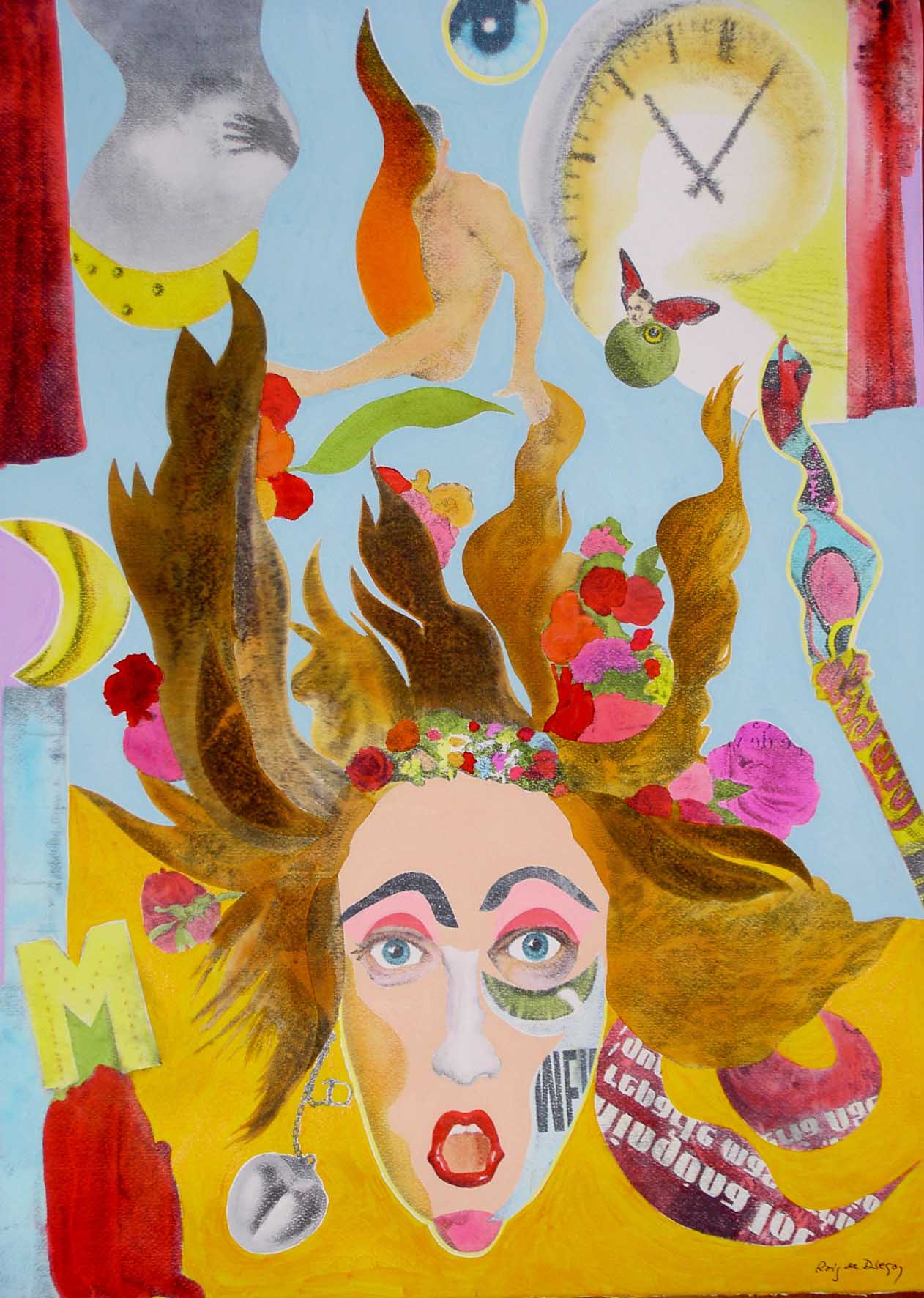Técnica mixta sobre papel de 300 grs.
Medida: 50 x 70 cms.
Un pesado telón de teatro se abre, y aparece el parpadeo mortecino de una vieja pantalla de cine. Un insecto atraído por la luz se acerca. Es “el gran dictador”, mariposa-escarabajo pelotero, con la bola del mundo que nunca llegó a dominar.
La pantalla empieza a arder y se desprende hasta el suelo.
Una de sus llamas lleva montado a horcajadas, como un jinete, al joven Rimbaud desnudo, recitando:
“En las aguas profundas que acunan las estrellas, blanca y cálida, Ofelia flota como un gran lirio, flota tan lentamente recostada en sus velos…”.
Ofelia, en mi sueño, no es la infeliz, enigmática y delicada criatura que va desapareciendo lentamente en las aguas ayudada por el peso de sus ropajes. Aquí es una Gorgona iracunda que se rebela contra Caronte. La corona de flores no es un símbolo que adorna su muerte sino droga y alimento para una nueva vida.
Y es que en la esfera del reloj, las manecillas, van girando lentas, pesadas pero inexorables hacia atrás, marcando un camino en dirección contraria a la muerte.
———-
A heavy theatre curtain opens, and the flickering screen of an old movie screen is revealed. An insect is attracted by the light. It’s “the Great Dictator,” embattled butterfly-beetle, with the world a sphere it cannot conquer.
The screen catches on fire and falls to the floor. Riding astride a flame, a young naked Rimbaud recites:
“In the deep waters that cradle the stars, white and warm, Ophelia floats like a great lily, slowly drifting gathered in her veils…”
Ophelia in my dreams is not the tragic, enigmatic and delicate creature that, pulled down by her heavy robes, slowly disappears beneath the waters. Here she is an irate Gorgon rebelling against Caronte. Her crown of flowers is not a symbol embellishing her death; but rather the drug and fodder for a new life.
And on the face of the clock, the hands move, slowly but inexorably, backwards, pointing in the opposite direction of death.

